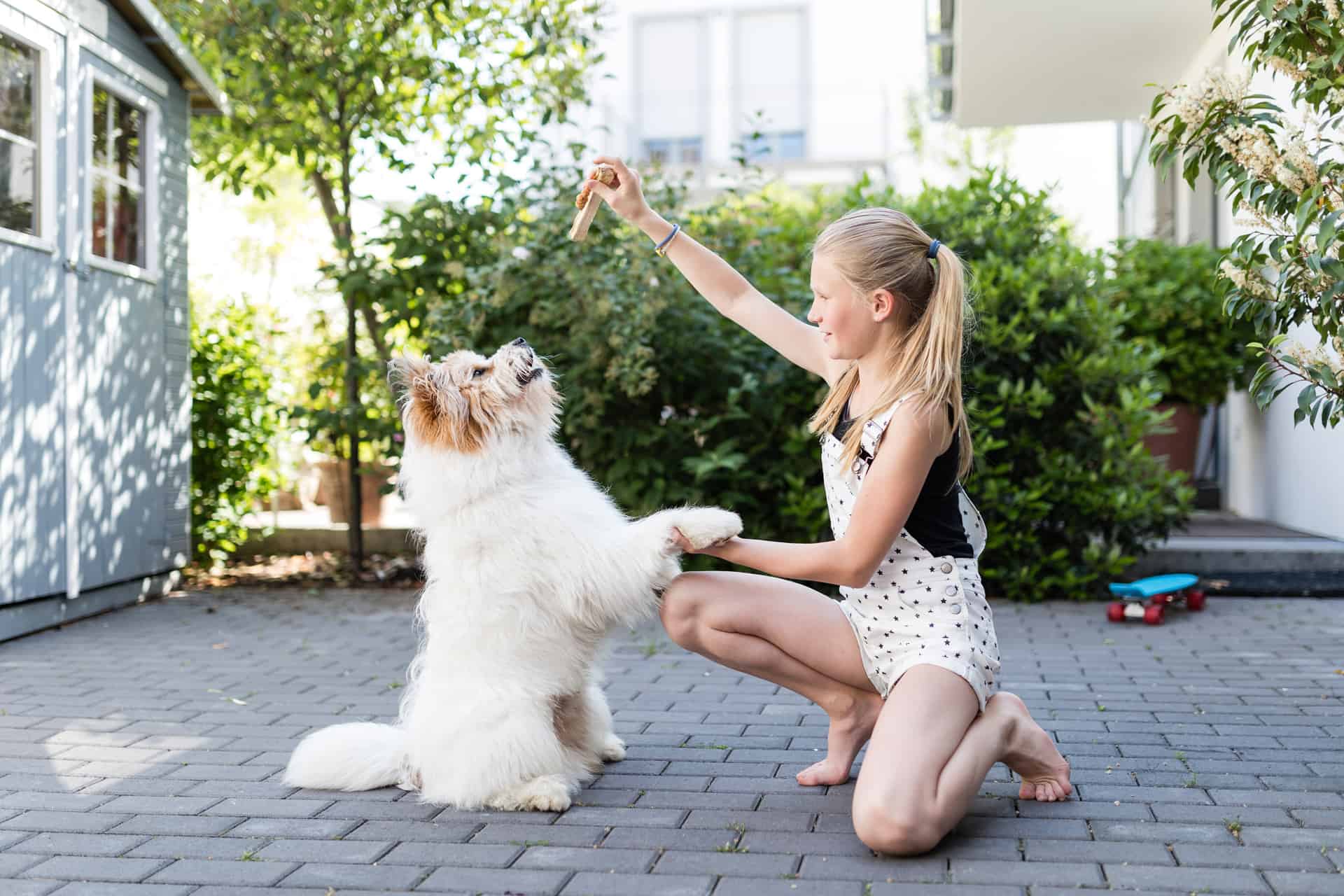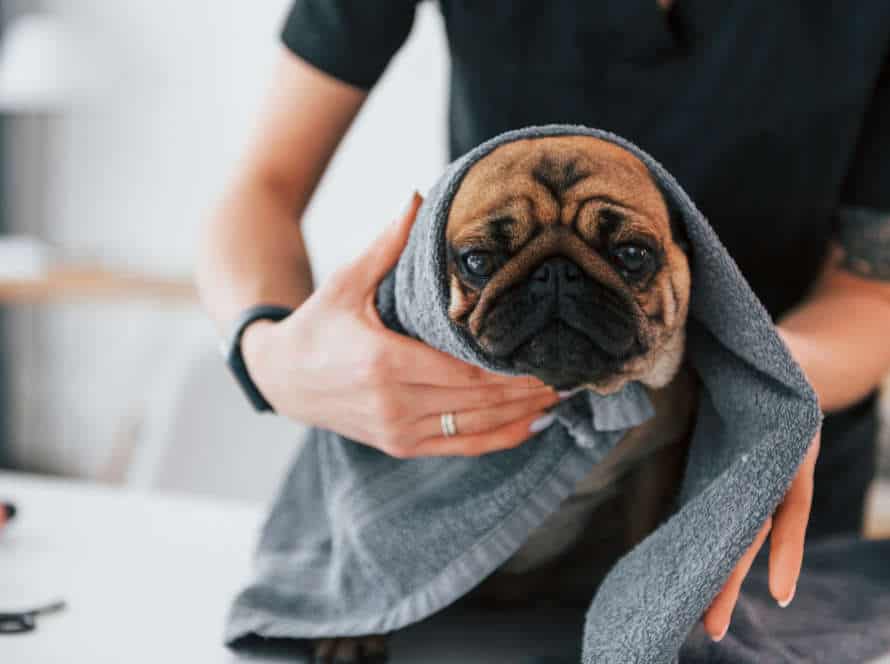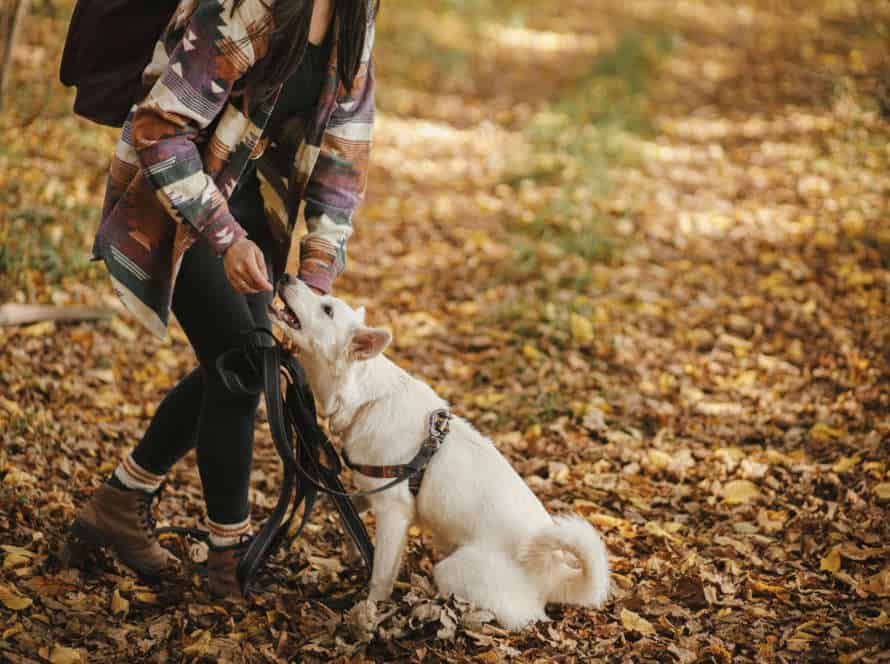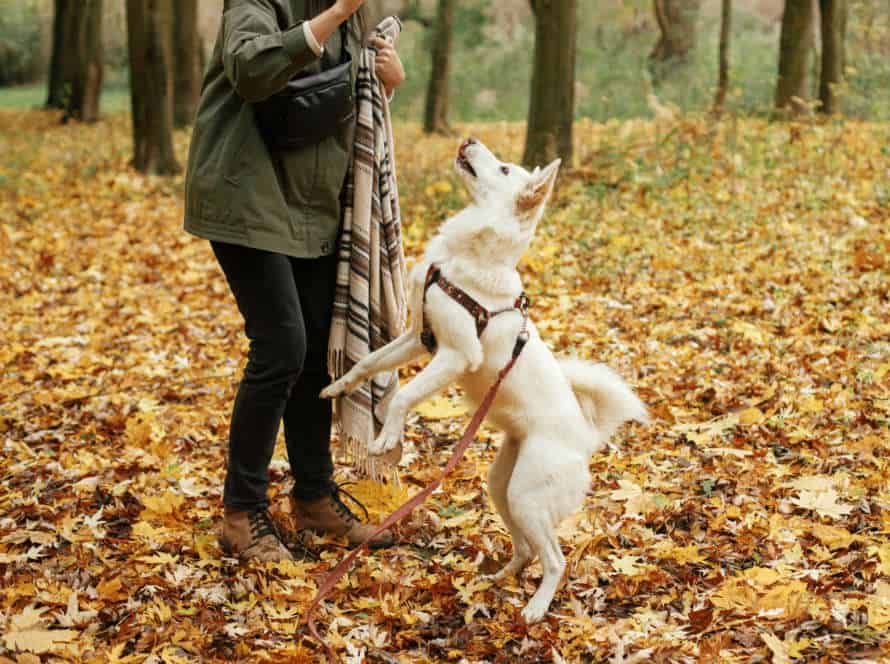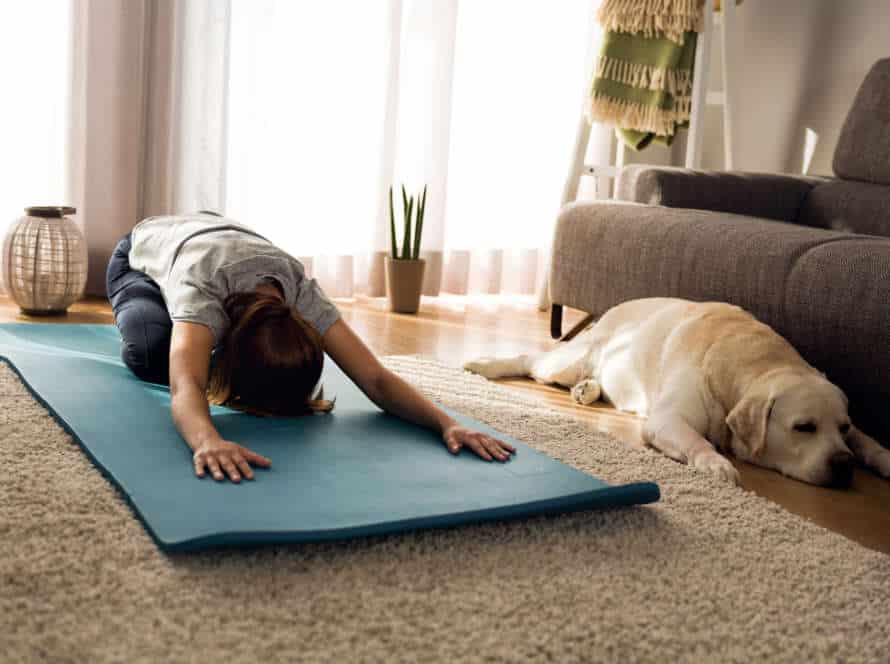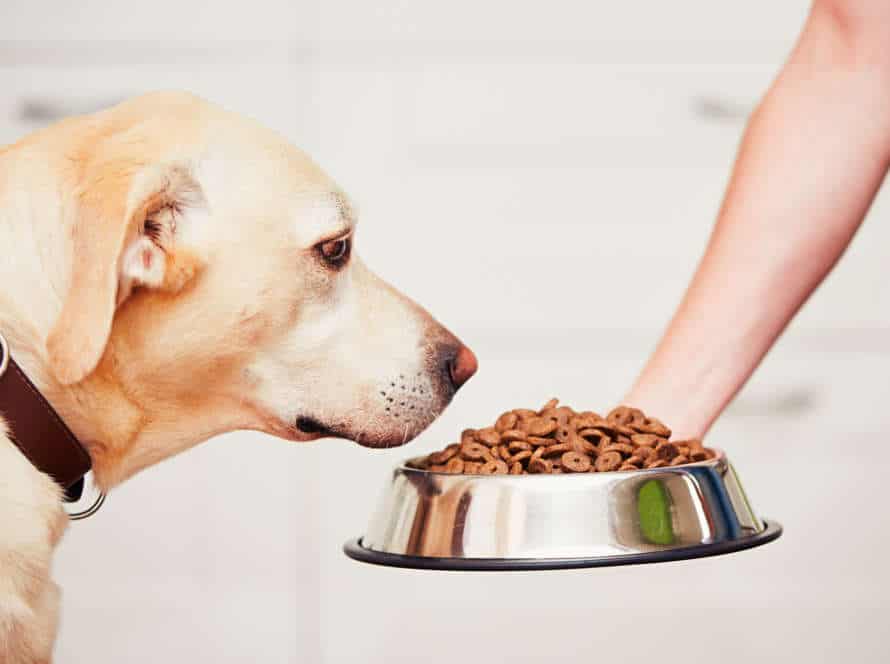How Positive Reinforcement Improves Your Dog’s Life
Positive reinforcement is a powerful, useful training method. It increases your relationship with your dog, builds trust and nurtures a happy pet. Here are the top five benefits:
- A positive learning space: Your dog responds better to praise than punishment. This helps them understand in a stress-free environment and gain confidence.
- Strengthening the bond: By rewarding good behaviour, the trust between you and your dog grows.
- Encouraging good behaviour: Rewards lead to your dog repeating their good behaviour more often.
- Reducing stress: Positive reinforcement creates a calm environment, reducing stress for your dog.
- Creating a happy pet: With the right techniques, you can bring joy to your life and those around you.
Pro tip: Use small rewards often and be consistent for the best results.
The Benefits of Positive Reinforcement Training
Positive reinforcement training is an awesome aid for teaching your pup. It uses rewards to urge your dog to start learning new habits. It’s a humane way to communicate with your furry buddy. Grasping why and how positive reinforcement works, you can find the best approach to make your pup happy and healthy. And the benefits? A contented, healthier pup!
Building a strong relationship with your dog
Positive reinforcement training is a great way to build a strong bond with your pup. It’s a reward-based system that promotes good behavior and discourages bad.
The advantages of positive reinforcement training are huge. It creates a trusting, respectful relationship between you and your dog. It also boosts their confidence and can help them be better behaved and obedient.
To use positive reinforcement techniques, it’s important to give your dog treats, praise, and play when they do something good. This helps them understand what is expected of them. Consistency is essential for successful training, so make sure you set clear expectations and rules right away.
Remember, your pup loves making you happy, and positive reinforcement is an effective tool to help them do so. Invest in your relationship with your furry friend, and reap the rewards of a well-trained, well-behaved companion.
Creating a happier living environment
Positive reinforcement training is a great way to show your dog what’s expected of them and promote good behavior. Here are some of the benefits of this method:
- Strengthening the bond with the owner.
- Building confidence and encouraging good behavior.
- Helping the dog to understand what’s expected.
- Increasing the chances of the same behavior being repeated in the future.
- Decreasing the risk of fear-based or aggressive behavior.
Positive reinforcement training is a surefire way to have a happy and healthy relationship with your beloved pet!
Stimulating your dog’s mind
Positive reinforcement training is an awesome way to keep your pup’s mind active and enhance their quality of life. Instead of punishing mistakes, you reward good behavior. Here are some benefits:
- Boosts mental stimulation and fights boredom.
- Strengthens the bond between you and your pup.
- Helps your pup be more social and self-confident.
- Encourages them to learn new tricks.
To get started, pick a treat your pup loves and give it to them when they do the right thing. Over time, they’ll realize that good behavior gets a treat and they’ll keep repeating it. Keep training sessions short and upbeat. Pro tip: Immediately reward good behavior so they understand what they’re being praised for.
Techniques for Positive Reinforcement Training
Positive reinforcement is a great way to train your pup! It can build desirable behaviors and make the bond between you and your pet even stronger. It’s simple: with positive reinforcement, you can teach your dog new skills, reinforce existing ones, and improve their life overall. Here are a few techniques you can use for positive reinforcement training:
Clicker training
Clicker training is a great way to train your pup with positive reinforcement! It involves using a clicker device that makes a distinct clicking sound when your dog does something right. Here’s how it works:
- Timing – Click at the exact moment your pup does what you want, then give them a treat.
- Consistency – Make sure your pup hears the clicker every time they do something right.
- Short sessions – Keep the training sessions short, around 10-15 minutes.
With clicker training, you and your pup can have a strong bond and your pup can have a better, happier life. Plus, it can be used for teaching tricks or behavioral training (like stopping barking, jumping or digging).
Treat-based training
Treat-based training is a way to positively reinforce your pup’s good behavior with snacks. This follows the notion that dogs will do actions that have good results.
Here are some tips:
- Get treats your dog loves.
- Train when your pup is alert and has few distractions.
- Break down complex tasks into smaller steps.
- Use a clicker or verbal cue to mark the desired behavior, then give the treat.
- Make the task harder as your dog learns.
Positive reinforcement not only improves behavior, but also strengthens the bond between pup and owner, and boosts confidence.
Pro tip: Keep training sessions short and fun – this will keep your pup engaged and motivated.
Verbal praise and affection
Verbal praise and affection are great tools for positive reinforcement training. They can help improve your dog’s behavior and well-being in many ways.
Verbal praise means using words or sounds to reward them when they do something right. Examples include saying “good boy” with a happy voice, or making a clicking sound with your tongue.
Affection, like petting, hugging, or cuddling, can also be used as a reward. It shows your dog that they are loved and valued. This can make your bond stronger and boost their confidence.
Using these techniques will create a positive and rewarding training environment. This leads to better behavior and a happier, healthier pet.
Positive Reinforcement Training for Common Behaviors
Positive reinforcement training has been around since 1950s. It’s proven to be a great way to teach your pup the behaviors you want. This form of training uses rewards such as treats or praise instead of punishment. Not only is this great for your pup, but it can help strengthen your bond with them.
In this article, let’s explore the benefits of positive reinforcement training for common behaviors.
House training
House training your pup can be a tough but gratifying experience. Utilizing positive reinforcement training methods can benefit your dog’s happiness and overall conduct.
Here are some regular activities to train your pooch to do, with positive reinforcement:
- Potty training: Regularly take your doggy outside, and reward them with treats and approval when they go to the bathroom outside. Use a steady order to help them relate the actions with the order.
- Crate training: Make your dog’s crate a comfortable and inviting area. Utilize treats and approval to motivate them to enter the crate and spend time in it. Steadily increase the time they spend in the crate.
- Basic orders: Educate your dog basic orders such as sit, stay, come, and heel using treats and approval to reward good behavior.
Positive reinforcement training can reinforce the bond between you and your canine and form a pleased and well-behaved pet.
Leash walking
Leash walking is essential for your pup’s development. Positive reinforcement training can make it a positive experience, benefiting your dog’s behavior and overall well-being. Here are some helpful tips:
- First, get your pup used to wearing a collar and leash. Give them treats and praise when they are chill and relaxed.
- Reward your pup with yummy treats when they are walking calmly by your side. Whenever they start to pull, stop and only continue once they return to your side.
- Use verbal cues like “heel” to tell them where to walk. And always reinforce good behavior with positive reinforcement.
- Take breaks and reward them for their good behavior on the leash.
- Remember to be patient and consistent. Positive reinforcement will help improve their behaviour and strengthen your bond over time.
Separation anxiety
Separation anxiety is a common issue in dogs. It causes them to act up or be anxious when their owners leave. Positive reinforcement training can help manage it and improve behavior.
This technique uses rewards for good behavior, instead of punishing bad behavior. It helps dogs think of being left alone as a good thing. Here are tips for using this training:
- Start with short times away.
- Give your dog a treat or toy before leaving.
- Reward good behavior with treats or praise.
- Practice leaving and returning calmly.
Using positive reinforcement can make your dog feel more relaxed when alone. This can make them healthier and happier.
The Importance of Consistency in Positive Reinforcement Training
Positive reinforcement is a great way to train your pup! It encourages behavior you like and teaches them commands. But, for it to work, consistency is key. In this article, we’ll dive into how consistency helps positive reinforcement training, and how it can improve your pup’s life.
Establishing clear rules and boundaries
Creating clear rules and boundaries is a must for positive reinforcement dog training. This ensures consistency and creates a great learning atmosphere for your pup. Here are some advantages:
- It sets up a routine for your pup, making it easier for them to learn.
- It avoids confusion and frustration, stopping bad behavior.
- It allows your pup to understand the behavior expected of them, and the consequences of following it.
- It strengthens the bond between you and your pup, based on trust and respect.
To set up clear rules and boundaries in positive reinforcement training, start by setting expectations and goals. Reward desirable behavior with treats and praise, and ignore or redirect undesirable behavior. To make a positive learning environment for your pup, stay consistent with your methods, rewards, and consequences.
Avoiding mixed signals and confusing commands
Consistency is essential when training your pooch! Mixed signals and confusing commands can make progress difficult, and lead to frustration for both pup and owner. Here’re some tips to avoid this:
- Have short, clear commands which are easy for your dog to understand.
- Use the same command for a particular activity each time.
- Make sure all family members are using the same commands and techniques.
- Reward your pup for good behavior with treats or compliments.
- Avoid punishment or negative reinforcement, as this can cause confusion and fear in your dog.
By following these tips and being consistent in training, you can help improve your dog’s behavior and overall quality of life. Pro tip: Consistency isn’t just important during training, but in all aspects of dog ownership. Establish consistent routines, rules and boundaries, to create a structured and happy environment for your furry friend.
Creating a routine for training sessions.
Creating a regular training program is essential for successful positive reinforcement training. Consistency is the key to your pup’s success! Here are the steps:
- Set aside daily time for training and stick to it. This will help them anticipate and prepare.
- Pick a quiet place, free from distractions, to train. This will help them focus and understand.
- Set attainable goals for each session.
- Praise and reward them for desired behavior every time.
- Track progress and make adjustments as needed.
By being consistent with positive reinforcement, your dog’s life will improve drastically. Pro tip: Start small. Teach them simple tricks or commands like ‘sit’ or ‘stay’ before moving onto more complex commands.
Frequently Asked Questions
Q: What is positive reinforcement?
A: Positive reinforcement is a training method that rewards good behavior. It involves giving your dog something they enjoy, like treats, affection, or toys, when they do something you want them to do again.
Q: How does positive reinforcement improve my dog’s life?
A: Positive reinforcement helps your dog learn good behavior, builds a stronger bond between you and your dog, and creates a more positive and enjoyable experience for both you and your pet.
Q: What are some examples of positive reinforcement?
A: Examples of positive reinforcement include giving your dog treats for good behavior, playing with them when they listen to your commands, and providing them with praise or affection when they behave well.
Q: How do I use positive reinforcement with my dog?
A: To use positive reinforcement, you should start by identifying the behaviors you want to encourage in your dog. Then, use rewards your dog likes, like treats or toys, to encourage those behaviors. Be consistent and patient, and remember to praise your dog when they do well.
Q: Will positive reinforcement work for all dogs?
A: Positive reinforcement can be effective for most dogs. However, some dogs may need additional training or a different approach. It’s important to pay attention to your dog’s behavior and work with a professional trainer if needed.
Q: Is positive reinforcement the same as bribery?
A: No, positive reinforcement is not bribery. Bribery involves offering something in exchange for something else, while positive reinforcement involves rewarding good behavior after it has already occurred. Positive reinforcement helps your dog learn what behaviors you want to see more of, while bribery can encourage your dog to only do something for a reward.

